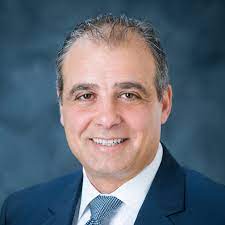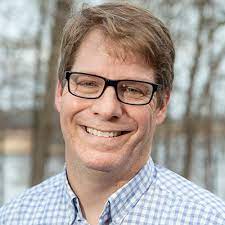Anderson laughed as Anderson remembered that Anderson wanted to meet with the long-time investigator “about an agency”. The caller suggested that Anderson should “just come up to governor’s office.” Anderson was being tapped by the governor to head the state’s $1 billion mostly federally funded welfare and social service agency, the Mississippi Department of Human Services (or DHS). This agency had been the subject of a massive public embezzlement case in the state’s history, in February. “Okay, DHS. Anderson responded, “Okay, DHS. John Davis, the former director of Temporary Assistance for Needy Families, was accused by the State Auditor’s Office of fraud fully misusing funds and aiding a nonprofit to embezzle millions more. Five others were also indicted and pleaded not guilty in February. They still await trial. Anderson was told by the governor’s office that he needed someone with a track record of eradicating fraud and whose integrity has never been doubted. Anderson came in first on the list. The agency is not only plagued by allegations of theft, but also has complaints from clients who need their assistance. It also has stringent state policies that make Mississippi’s aid programs the least in the country. And a history of disregarding any outcome measures that would indicate if the agency actually helps people move out of poverty. Anderson replaced Jacob Black, Davis’ former second-in command, while Reeves sought a replacement. According to his LinkedIn account, Black left the agency to become a staff officer at the Mississippi Division of Medicaid. Anderson has managed the agency’s response in the COVID-19 crisis, while also switching up his staff and introducing greater controls to prevent abuse in the future. Anderson stated that he was not like his predecessors and would like the state to increase Mississippi’s TANF benefits. These are currently $170 per month for a family with three children. Anderson also said that he would like to see eligibility expanded to better serve vulnerable Mississippians. Mississippi Today interviewed Anderson about the agency’s operation and his plans for its future. This interview was conducted just four months after Reeves had appointed him to the position. This interview was edited to be more concise and clear. Mississippi Today: What is the most surprising thing you have learned since taking over? Anderson: I knew this agency had a broad range of programs, but it was the breadth of our work that really surprised me. My previous frame of reference for DHS was the welfare agency. It is to a certain extent. However, there was a governor’s office of federal programs for many years. Some of the programs that we administer have been merged into DHS. It’s a broad range of services we offer. This was quite surprising. The next thing I noticed was the lack of accountability and control that the agency was running with. It was amazing to see how many checks and balances there were for an agency this large. This was my feeling. What is the secret to this? Has it been that way all along or has it become more erratic over time? Agency always follows the direction of the top. First, let me say that I don’t know if there was always a lack in accountability, compliance, rules and regulations, but John joined the agency and started putting aside some of them. I believe it did during his time here. We have moved in the opposite direction. When I arrived, I asked who was our compliance officer. And they didn’t. We didn’t even have a compliance office. That was not surprising. This was a huge surprise for an agency of this size. The first thing I did was to create a compliance department and bring Sandra Griffith, a woman from Medicaid, over as chief compliance officer. Can you tell someone who isn’t familiar with the workings of a state agency what they do on a daily basis? What do they do physically? Let me give you a list of the things she is looking at. There are seven programmatic areas, and each one has a state plan which we submit to the federal oversight agency. The review of all state plans is done for two reasons. One, to ensure that they are up-to-date. Two, to ensure it conforms to all federal guidelines (regs and statutes) for each program. We have policies and procedures when we look at state plans. There wasn’t any coordination between the various divisions. Everyone was very siloed. We need to move beyond this silo mentality, and work together across the various divisions. It’s funny, because John Davis said exactly that. He was talking about a “holistic approach” to the family. Well, John is not my friend. John was not a person I had any contact with, but he was in my time before mine. The work we are doing is real. It’s not just a talk about it. The compliance officer reviews every policy and procedure. She has actually created a standard operating procedure guideline that will be used by every division. This is not a mere lip service. A senior member of the management team is the chief compliance officer. Because I value integrity and compliance, she reports directly to me. We are creating a new culture within the agency. My reputation for integrity is something I take very seriously. It’s not going to be sold and it certainly won’t be given away. It starts with me, and then it spreads to the agency. Are you familiar with the complaints this agency has received over the years regarding TANF and child care? Are you familiar with what people have said about the agency and the information they tried to obtain from it, so that you can correct it? Some of this I do know. Although I am learning more every day, I do know the two main complaints we receive. They were valid complaints, I will admit. We are not great at customer service. Even though we’ve done our best to ensure that our benefits and services are as accessible as possible, we still get frequent complaints. We used telework to allow our caseworkers and eligibility workers to still be in touch with the people we serve, even though county offices were closed. Customer service, I’m sorry, got a bad rap in the past. We are trying to change that and be more responsive to the public. Another thing that comes with this approach from the top is that information was — you stated it earlier, you couldn’t even get press release in the past — there was no information. If we are doing the right thing, then I don’t have any concerns sharing information with the public. Under my leadership, we want to be transparent and will be. Those two issues are related to some of my concerns, which include people not being able to get services they want, especially TANF. Another is that child care providers don’t understand what vouchers are and their parents aren’t receiving vouchers. The agency’s new rating system for higher reimbursement has not been helpful to child care providers. I was curious if you could share your feelings about the difficulties people have experienced within these programs. Do you think it has more to do the agency’s operation or the legislative limitations that the agency operates under? TANF is an example of this: a maximum $170 for a family with three. Some states offer much more. Yes, many states offer more. They are also serving a greater population. According to the agency, the reason our (TANF caseload) was so low is that people didn’t apply. However, if people don’t qualify for the program, it’s not because they aren’t poor, or that they don’t need it. It’s because the state has so strict restrictions. Let me tell you, we operate within the guidelines of law. The monthly benefit amount is set by the statute. To request an increase in the monthly benefit amount, we would need to return to the legislature. That’s something I have been considering. Yes. Because I believe the amount of direct assistance we can offer a family is very small. This is a conversation I would like to have with the Legislature to discuss increasing our monthly benefit amount. There are two parts to the eligibility guidelines. There are two parts to the federal statutory guidelines. Then there are our own eligibility rules. I am open for expanding, or at least considering expanding, our eligibility guidelines. Who determines these (eligibility guidelines). Our state plans are written by us and describe our eligibility standards. Our eligibility standards are much higher than those in other states. It’s not something I can say. They are different from other states. Each state makes their own decisions. Several states, including New Jersey and Virginia, have recently increased the number of potential TANF recipients. I believe Mississippi should also take a look at this. You must understand that I am only there to serve the governor’s pleasure and that the governor must also be open to these ideas. The governor will approve and check out what we do to change our eligibility guidelines. Does that not always work with any type of agency change? You couldn’t just choose to do that. Each agency I’ll refer to as a cabinet agency within a governor’s cabinet — such as Medicaid, DHS and CPS, MEMA — major regulatory changes go through the governor’s office for feedback. Are you sure that the governor was consulted on regulatory changes made by the previous administration? I don’t know. I was not there, so I can’t tell what happened. Readers would be interested in knowing how much Phil Bryant would need to have contributed to the “Families First” mentality. (Editor’s Note: A program called Families First for Mississippi was sanctioned by an agency. Large up-front payments were made to the Mississippi Community Education Center, whose officers are accused of misusing the majority of the money. The record is about Families First. Families First was involved at least in part by the First Lady. I don’t know what level of knowledge the governor had in the past. I don’t know. Let’s go back a bit. You spoke briefly about your past experience with the agency when you were first announced. Your family received food assistance. Can you go into a little bit more detail? This agency has made me a success story. When I was ten years old, my parents divorced. My dad just disappeared. He didn’t support us at all. Six of us were there. My mom was a stay at home mom. She was thirty years old and had six children. We lost everything, as many families do. We lost our home. We moved into the housing projects, or low-rent housing projects as they were called. My mom did the right thing. She applied for food stamps and welfare. The next thing she did was to go down to Ingalls shipbuilding and say, “Give us the best-paying job that we can offer.” They replied, “The worst paying job you can possibly qualify for is one you cannot do.” It’s called Ship Fitter. She replied, “Well, tell us about it.” It’s a physically demanding job. She carried a 16-pound sledgehammer and took one-inch plates from steel. A tack welding torch was at her side. She worked all day on the ship, eight hours per day, five days a semaine. That job was her training and she continued to receive food stamps and Aid to Families With Dependent Children. She always saw that assistance as a safety net to help her get to stability so she could become self-sufficient. She was fully trained within 18-19 months. She was now fully employed. We actually moved in to a house. She started purchasing a home with a HUD loan. That’s the story of success I want to repeat time and again. You know what? She made it. It was amazing to see six of us, my mom, get through those years. But, she didn’t make a lot of money. In the 70s and 80s, it was probably $10,000-12,000. We managed to survive and had a place we could call home. And we were out of aid in just 18 and 19 months. Is that the story you were telling? What is the agency doing today? That’s what we try to do with every TANF beneficiary that we come in contact with… We want to offer tangible help today to people so they can have lasting hope for tomorrow. What does this mean? This means that we provide them with crucial support when they are at the most critical stage of their lives, but also give them the tools to help them reach stability and sustainability. You can help them with job training via our SNAP E&T or TANF Work Program. You can also find them childcare. They can also receive TANF and SNAP benefits while they are training to become child care professionals. These things help people move from crisis to stability and sustainability. If we can get people to sustainability, that is the ultimate success for this agency. My message to my employees was that we want success stories to repeat as often as possible, but we must strive for excellence as an agency. In the past, we have not been striving for excellence and this is a new goal that we will set as an agency. It’s not enough to just go through the motions, make the decision and be aware of all the needs. We also need to coordinate all the agency resources. For example, if someone comes to the county office for child support services, and they state that they don’t have one, then that should not be the end. It is important that we find out what their needs are as agencies, no matter where they first meet us. These services are dependent on people, regardless of whether they’re speaking to politicians or agency staff. This is something I hear a lot. I hear this a lot. I was just thinking about a study I saw yesterday. Florida’s department for human services took a decisivi
A couple of years ago, to see if 20 percent could be taken from crisis to self-sufficiency. According to the agency’s numbers, if someone stayed on benefits for more than 21 month, there was little chance of them getting off before the maximum rate. They could get them work, help them become stable, and then make them self-sufficient in the 21-month period. The likelihood of them returning to receiving benefits decreased significantly if they were able to find them a job. There are many generations in our state that have been dependent upon benefits such as SNAP and TANF. They don’t always get them. However, there must be a transition point. My view is that people will say to their families, “This is a safety blanket.” The safety net will be there for me as long as I need. Then, I’m going take the burden on myself and do my best to help people make the transition. Another thing that I’m well aware of is the concept of benefit cliffs. People who receive these benefits get a job, and then they suddenly drop off the eligibility rolls. However, if they are just above a subsistence level they reach this huge cliff, where they are still food insecure and have problems with childcare. Some women are faced with the dilemma of whether to stay on benefits or not, even if they can afford childcare. This idea of benefit cliffs is being explored in every state. The answer is to find better employment opportunities. This requires the cooperation of employers. It takes effort to find those partners. It takes persistence to support people for as long as possible. Another thing that I am disappointed in is the amount of data we store. We don’t have access the data to show us how our clients are doing two, three, and five years from now. We talked a lot about this when I was at Medicaid. It was that we had too much data but it wasn’t actionable. It was numbers, numbers and more numbers. DHS doesn’t have any numbers at the moment. One of my commitments that I made to senior leadership was to establish performance metrics and track the actual impact on our population. We have the Statewide Longitudinal Data Study (State Longitudinal Data System SLDS), which has all these numbers. But I haven’t seen any results. I have not received any feedback. I was wondering how your interactions with NSPARC (National Strategic Planning and Research Center of Mississippi State University) have been. They are receiving millions of dollars in TANF money and can’t tell us what happens. NSPARC is a familiar name to me. Since I arrived here, I have met with NSPARC. NSPARC does a lot for the state, and they do a lot for the SLDS. But I haven’t seen a lot. One of my commitments, and my senior leaders get tired of me repeating it, is that we don’t pay people if they can’t see the results. Period. Would it surprise you to learn that NSPARC received more than a million dollars from TANF over the past year? It wouldn’t surprise me. They have been a partner for many years. As I said, we will be evaluating contracts. Based on the services provided, we’ll evaluate all invoices. If they send me an invoice but I don’t receive any deliverables, I won’t pay the invoice. You are currently looking for proposals to spend $36million in TANF subgrants. I was contacted by a national policy representative who said that services have their place but when families don’t know how they will pay their next month’s rent or feed their children, we should prioritize those needs…. COVID has seen people lose their jobs. Why isn’t the agency using this money to help families meet their basic needs? But, what you are referring to is the same as I said: I do not have the authority to modify the levels of direct assistance to provide more direct assistance to families. Subgrants for which we are taking RFP proposals are already approved for subgrant purposes. We cannot turn the switch and give them direct assistance. This is because we would have to modify our eligibility standards and change the benefit amounts. I believe we provide direct assistance at the same level as any state in the country. We approve about 20-25 percent of applicants, which is about the average. Yes, but only five percent of our total funds are spent on them. I don’t think it fair to say that a percentage of applicants. After denying assistance for so many years, people simply stop applying. Because people know they won’t be granted assistance, the pool of applicants is smaller. I understand what you are saying. I am also required to follow the TANF guidelines. Is it not possible to divert $36 million to child-care, which is where there’s a long waiting list? We’ve created a child-care task force, and have $47 million of CARES Act money we’re going for child care. We’re also meeting with child-care providers. We’re doing all we can to support child care recipients and child care providers. It was just a few weeks ago that the task force met. This is a new taskforce. They will meet again in two weeks. We are trying to get feedback from the providers about what we can do for them. We’re providing PPE to them during the COVID period, as a part of our other activities. We will provide cleaning supplies. We are committed to providing the best child care possible. I wanted to know a bit more about the ongoing investigation. Also, what can you tell me about any potential investigations. There’s not much I can say. Because I am not involved, this agency is the subject of investigation. They don’t keep my informed about what they are looking at. The indictments have been filed and the state trials will take place when they are ready for trial. As far as I know, there is an additional federal investigation. I’m not sure what the scope of this investigation is. What do you think the extent of this could have been? Based on what you’ve seen, since you arrived here. How can people take millions of dollars that should be going to the poorest? This is the same story that I have seen repeated in fraud investigations. Internal controls are useless because money can be spent in any way that people want. We were not doing monitoring visits. We weren’t doing any oversight. When you give money to people and don’t provide any guidelines, they will spend it as they please. All of this has changed. The subgrant manual was rewritten. The monitoring process has been improved. Monitoring of subgrants is now controlled by the compliance office. This is a completely new approach. Sandra Griffith will not take no for an answer, I can assure you. She goes out to supervise a subgrantee, and she says, “Tell us what you spent this money on.” This is not going to work. This is the past. We’re going to be compliant in the future. Everyone we do business will be compliant. This payment to Prevacus (a concussion research company) is the largest amount of money that was under investigation in the indictment. Please help me to understand why DHS money went to Prevacus. I have no direct knowledge of where DHS money went. The money we gave to MCEC (Mississippi Community Education Center), for them to do TANF works, apparently went to Prevacus. If that’s your question, we didn’t give the money to them to give Prevacus. DHS did not authorize anyone to invest in concussion research groups. How can you be sure? Because I have looked at the records. Nothing in the records indicates that DHS approved anything similar to that. Can I claim that John Davis did not tell them “Yeah, do that.” That’s not what I can say. I don’t know John Davis’ thoughts. And I don’t know what John Davis said to them. The other day, I received a call from someone who asked me if John Davis had authorized no monitoring for MCEC or FRC. He did tell MCEC/FRC that. Those details will be revealed in the trials. You’ve also made staff changes after an internal investigation to ensure that no staff members were involved in these actions. What was the involvement of people who were still employed at the agency? I mean, I am satisfied that people who are now here are committed to the agency’s mission and those who are no longer here made decisions. When I was conducting my due diligence, certain people said that they would rather go home than be interviewed. Others however, after speaking with me, decided to return home. We make joint decisions about this. How many people are there? Actual numbers are not available. There are two to three new deputy directors. There are two to three new division directors. Did it involve a major overhaul? Or just a few people? Estimate. Although it might not be that significant, it is something that my readers would like to know. John Davis and one man were indicted. How many others at DHS were involved? You were able to poke into the matter and some people left. It is not known if anyone still here has been involved in criminal conduct with John Davis, Nancy New, or any other person. But what about when you took control? I don’t know the names of those who decided to resign, or retire. I didn’t conduct that investigation so I don’t have any idea of who was involved. What I was focusing on were the people who wanted me to keep working here. I am satisfied that they did not know of any criminal activity or were involved in any criminal activity. Editor’s Note: This interview was published along with two other stories on the state’s troubled Temporary Assistance for Needy Families program. These stories are available below. Director claims that the current standards of agency didn’t permit agency to quickly reprioritize programs in order to help more families in need. Two Mississippi nonprofits are accused of spending millions on services not helping poor families.










